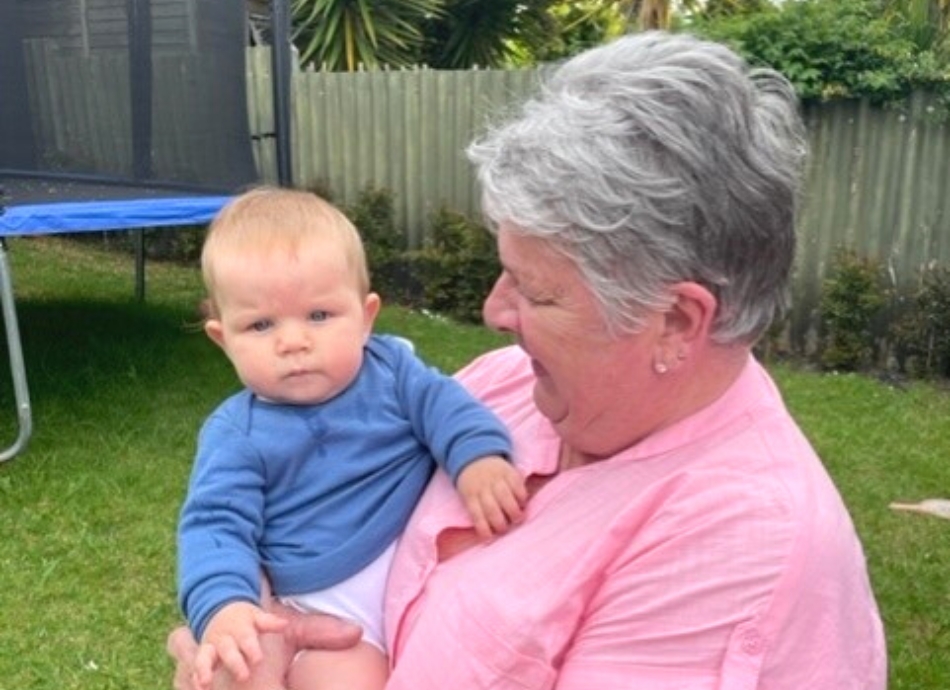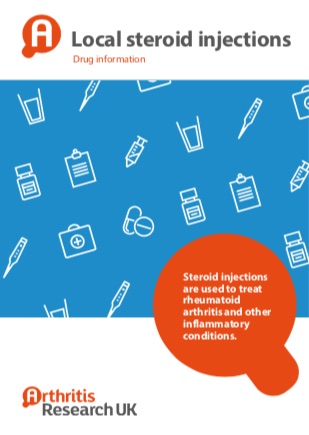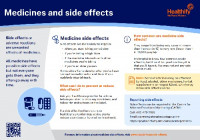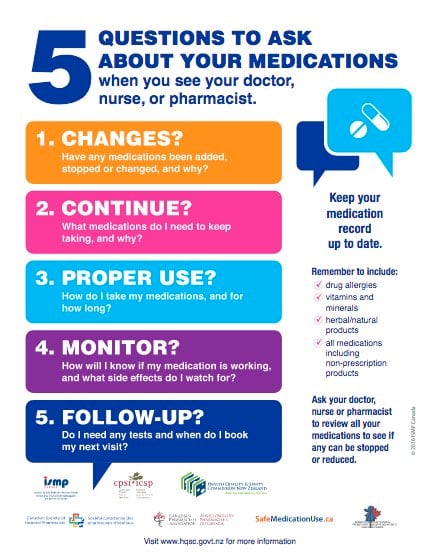Cortisone injections
Key points about cortisone injections
- Cortisone injections (also called steroid injections) are used for joint problems and arthritis.
- They involve the injection of cortisone medication such as triamcinolone, dexamethasone or methylprednisolone directly into a joint space or soft tissue to reduce inflammation (swelling) and pain.
- Find out how they are given and possible side effects.

Cortisone is a substance similar to a natural steroid hormone produced by the body. Cortisone injections are given into a painful joint, soft tissue or bursae (fluid-filled sacs that cushion spaces around and between your joints, tendons and bones) to reduce pain and swelling.
They're used in conditions such as bursitis, frozen shoulder, gout, rheumatoid arthritis, osteoarthritis, tendinitis, carpal tunnel syndrome, rotator cuff damage, tennis elbow and trigger finger.
Cortisone injections are used when there is a flare-up or the pain isn't responsive to other treatments, or when other medicines can't be used.
They provide short-term pain relief, usually for up to a month, but don't cure the problem or improve joint function or stiffness.
Video: Cortisone injection
(RheumInfo, Canada, 2011)
Note: this video is from Canada so may have information that differs from New Zealand recommendations.
Avoid regular repeated injections
Cortisone injections are used as short-term relief. Regular repeated steroid injections aren't recommended. Frequent injections into the same area can cause the bone, ligaments and tendons to weaken over time.
Generally, cortisone injections aren't given more often than 3 or 4 times a year and they are given at least 6 weeks apart.
The following are examples of cortisone injections available in Aotearoa New Zealand:
- Betamethasone (Celestone Chronodose®).
- Dexamethasone (Dexamethasone-hameln®).
- Methylprednisolone (Depo-Medrol®).
- Triamcinolone (Kenacort-A®).
- Before giving the cortisone injection, your healthcare provider will remove excess fluid from the joint using a syringe and needle.
- The fluid is examined by your healthcare provider and a sample is sent to the laboratory for diagnosis.
- Removing the fluid reduces pressure in the joint. This helps relieve pain and may encourage the joint to heal.
- A separate syringe and needle are then used to give the cortisone injection.
- The cortisone slowly starts to act over 24 to 36 hours. The beneficial effects may last for days or months.
- A local anaesthetic may also be given. This helps relieve pain immediately and lasts for 3 to 4 hours while the cortisone is beginning to take effect.
Care after the injection
- After you've had a cortisone injection, rest the joint for about 2 days and avoid excessive movement or stress on the joint for about 1 week.
- Sometimes there is increased pain in the joint after the injection which settles within 24 hours. To relieve the discomfort rest, apply ice and take pain relievers such as paracetamol (or as advised by your healthcare provider).
Like all medicines, cortisone injections can cause side effects, although not everyone gets them.
| Side effects | What should I do? |
|---|---|
|
|
|
|
|
|
|
|
|
|
|
|
|
|
Read more about medicines and side effects and reporting a reaction you think might be a side effect.
The following links have more information on steroid injections. Be aware that websites from other countries may have information that differs from New Zealand recommendations.
Steroid injection(external link) Rheuminfo
Celestone Chronodose(external link) Medsafe Consumer Information, NZ
Kenacort-A(external link) Medsafe Consumer Information, NZ
Steroid Injections(external link) Patient Info, UK
Brochures
Steroid injections(external link) Versus Arthritis, UK, 2021
Medicines and side effects(external link) Healthify He Puna Waiora, NZ, 2024
5 questions to ask about your medications(external link) Health Quality and Safety Commission, NZ, 2019 English(external link), te reo Māori(external link)
References
- Local corticosteroid injections(external link) New Zealand Formulary
- Kenacort-A 40(external link) Medsafe datasheet, NZ
- Celestone Chronodose(external link) Medsafe datasheet, NZ
- Depo-Medrol(external link) Medsafe datasheet, NZ
- Corticosteroids and Central Serous Chorioretinopathy (CSCR)(external link) Medsafe, NZ, 2018
- The risk of hyperglycaemia with systemic glucocorticoids(external link) Medsafe, NZ, 2018
- Managing gout in primary care(external link) BPAC, NZ, 2021
- Managing pain in osteoarthritis – focus on the person(external link) BPAC, NZ, 2018
- Vangeison C, Roys J, Catalanotto M, et al. Medication‐induced mood disorders following epidural steroid injections in patients with pain – a case series(external link) Clin Case Rep 2023;11(6):e7415
Brochures


Medicines and side effects
Healthify He Puna Waiora, NZ, 2024

Health Quality and Safety Commission, NZ, 2019
English(external link)Te reo Māori(external link)
Credits: Healthify editorial team. Healthify is brought to you by Health Navigator Charitable Trust.
Reviewed by: Stephanie Yee, Pharmacist, Auckland.
Last reviewed:





